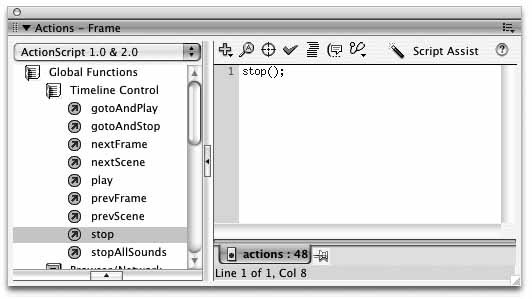Section 3.7. Your First Script
3.7. Your First ScriptTo prevent the movie from looping, you need to add an ActionScript method (also sometimes called a command or action). You'll use more ActionScript later, but for now, just add a simple stop( ) method and publish the movie again.
|
EAN: 2147483647
Pages: 117
 Development Panels
Development Panels  Actions, or by pressing F9.
Actions, or by pressing F9.